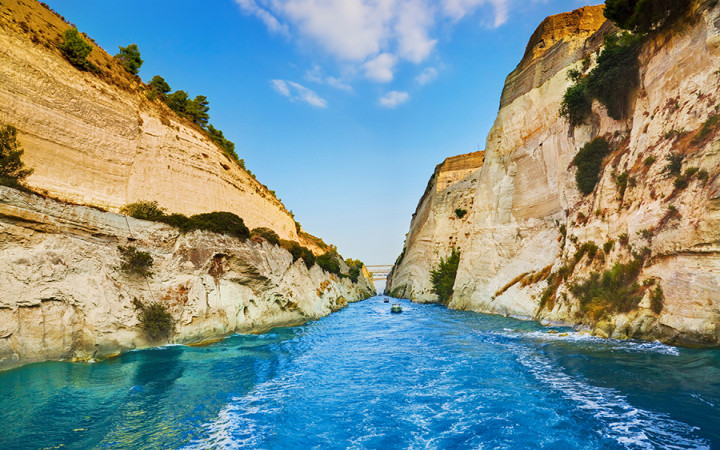Today’s Wonder of the Day was inspired by Samrudh . Samrudh Wonders, “What are the features of Isthmus ” Thanks for WONDERing with us, Samrudh !
Imagine yourself as the captain of a trading ship hundreds of years ago. Your usual routes take you up and down the eastern seaboard of the U.S., but an interesting opportunity has come your way to your seafaring explorations a bit farther.
You've been asked to deliver a cargo of sugar and tobacco to the opposite end of the country: the wild and largely-unknown western coast. Other captains warn you that the journey will be long, since you must travel all the way around the southern end of South America.
The explorer in you, though, decides to test the waters of Central America along the way. Could there be a shortcut that connects the Atlantic Ocean to the Pacific Ocean?
Your journey leads you to Panama but, alas, a narrow strip of land still separates the two great oceans. As you continue your journey south to make your way around South America, you WONDER whether, one day, there might be a way to cut across that narrow strip of land and slice thousands of miles and many days off your journey.
Today, of course, we know that dream did come true in 1914 in the form of the Panama Canal. As awesome as the canal is, we want to focus instead on that narrow strip of land known as an isthmus.
An isthmus has three defining characteristics: (1) it's a narrow strip of land; (2) it connects two larger landmasses; and (3) it separates two bodies of water. For example, the Isthmus of Panama is one of the most famous isthmuses in the world. It consists of a strip of land about 30 miles wide at its narrowest point that separates the Atlantic Ocean from the Pacific Ocean while connecting the continents of North America and South America.
Another famous isthmus is the Isthmus of Suez. Located in Egypt, it's a strip of land approximately 75 miles wide that connects the continents of Africa and Asia while separating the Mediterranean Sea from the Red Sea.
Throughout history, isthmuses have been strategic sites for both trade and military purposes. They often serve as key locations for ports, canals, and links between land and sea trade routes.
Isthmuses can form in several different ways, depending upon the geology of the areas where they form. For example, experts believe the Isthmus of Panama formed as a result of volcanic activity that created a chain of islands. Over time, sediment collected between the islands, forming the isthmus.
In other areas of the world, isthmuses may form as a result of the movement of tectonic plates, rising water levels along fault lines, and the movement of waves and tides. For example, the action of tides and waves can create a thin sand bar between the mainland and a coastal island.
The resulting sand bar is a special kind of isthmus known as a tombolo. The most famous tombolo in the world is the Rock of Gibraltar, which forms part of the western entrance to the Mediterranean Sea.





